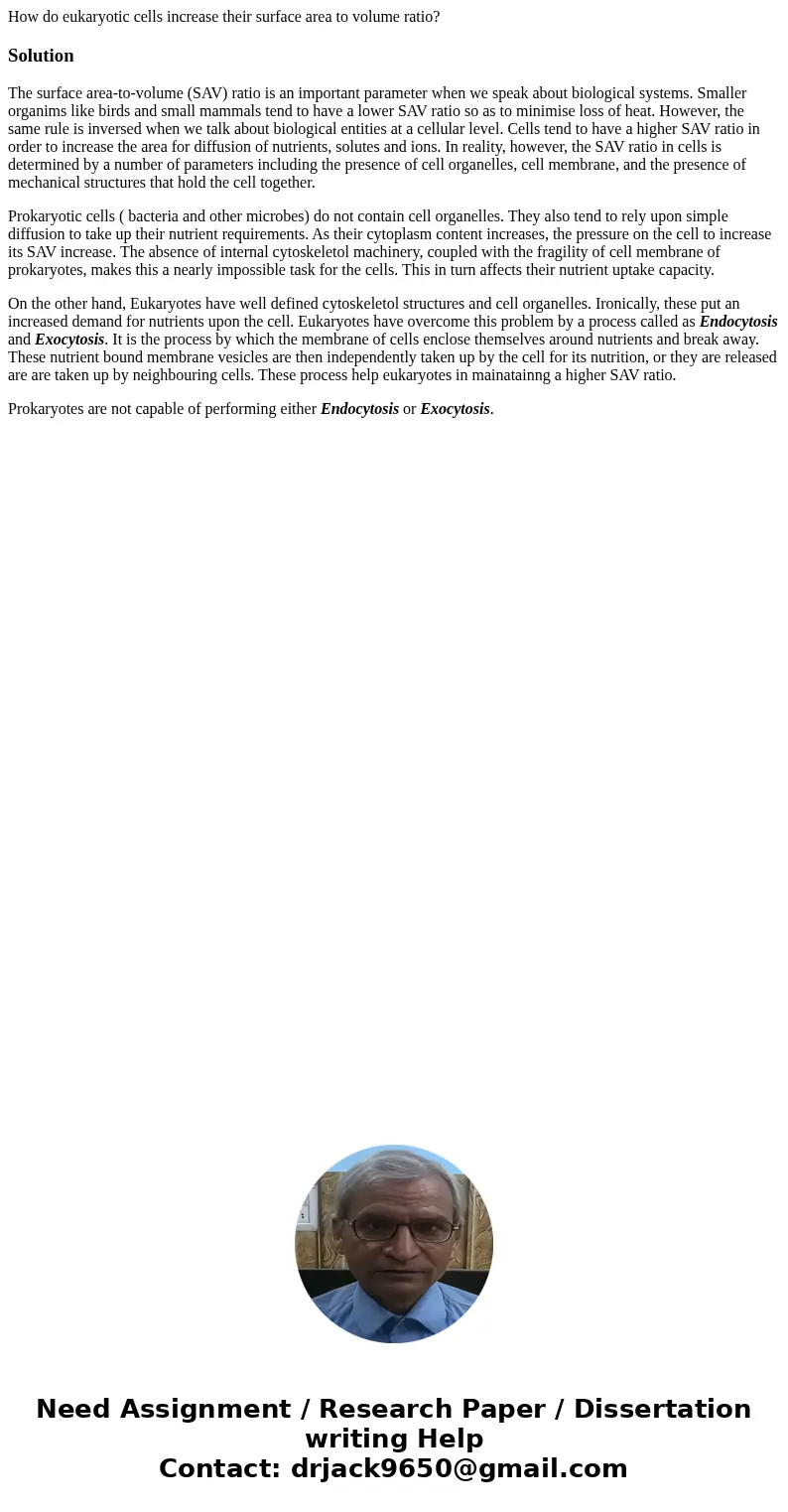How do eukaryotic cells increase their surface area to volum
How do eukaryotic cells increase their surface area to volume ratio?
Solution
The surface area-to-volume (SAV) ratio is an important parameter when we speak about biological systems. Smaller organims like birds and small mammals tend to have a lower SAV ratio so as to minimise loss of heat. However, the same rule is inversed when we talk about biological entities at a cellular level. Cells tend to have a higher SAV ratio in order to increase the area for diffusion of nutrients, solutes and ions. In reality, however, the SAV ratio in cells is determined by a number of parameters including the presence of cell organelles, cell membrane, and the presence of mechanical structures that hold the cell together.
Prokaryotic cells ( bacteria and other microbes) do not contain cell organelles. They also tend to rely upon simple diffusion to take up their nutrient requirements. As their cytoplasm content increases, the pressure on the cell to increase its SAV increase. The absence of internal cytoskeletol machinery, coupled with the fragility of cell membrane of prokaryotes, makes this a nearly impossible task for the cells. This in turn affects their nutrient uptake capacity.
On the other hand, Eukaryotes have well defined cytoskeletol structures and cell organelles. Ironically, these put an increased demand for nutrients upon the cell. Eukaryotes have overcome this problem by a process called as Endocytosis and Exocytosis. It is the process by which the membrane of cells enclose themselves around nutrients and break away. These nutrient bound membrane vesicles are then independently taken up by the cell for its nutrition, or they are released are are taken up by neighbouring cells. These process help eukaryotes in mainatainng a higher SAV ratio.
Prokaryotes are not capable of performing either Endocytosis or Exocytosis.

 Homework Sourse
Homework Sourse